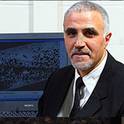
Autologous grafts have been the gold standard in tissue replacement and the most accurate means of recapitulating both the biological and mechanical properties of tissue. However, autologous grafts have had complications and drawbacks. Skin grafting, a prime example of an autologous tissue graft, has been limited by the size of graft, availability, and secondary donor site morbidity. Use of cadaveric tissues circumvents several limitations of autologous grafts; however, sterilization processes used to reduce the risk of disease transmission potentially weaken tissues and eliminate living cells and some growth factors from scaffolds, making them suboptimal tissue replacements. Chemical cross-linkage of tissue scaffolds has been used in some circumstances to strengthen weak tissues, but can result in a prolonged inflammatory response and limit graft integration in vivo. Partial enzymatic digestion of cadaveric tissues has also been used to improve graft porosity, which potentially assists with graft neovascularization, although this procedure has not been overwhelmingly successful. Proprietary methods of chemically and physically stripping tissues of cellular materials have been commercially developed to minimize graft rejection and loss of essential biological factors; however, these methods cannot be universally applied to all tissues. GraftJacket Matrix (GJ) (Wright Medical, Arlington, TN, USA), an acellular human dermis–derived graft, is an example of a commercially available graft that is commonly used in surgery for soft-tissue augmentation and repair. The elastic properties of skin-derived scaffolds make GJ an inferior replacement for stiffer tissues such as tendon. Hence, current limitations in tissue processing have spawned interest in emerging technologies that enable precise engineering and manufacturing of scaffold materials on a nanoscale that recapitulate the unique mechanical needs of a variety of tissues while promoting tissue repair that also occurs on a nanoscale.
Available at: http://works.bepress.com/khalid_lafdi/19/

The document available for download is the authors' accepted manuscript, provided in compliance with publisher policies on self-archiving. Some differences may exist between the manuscript and the published version; as such, researchers wishing to quote directly from this resource are advised to consult the version of record. Permission documentation is on file.